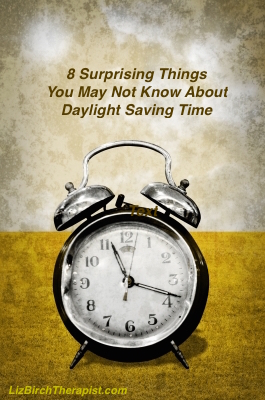 When I first began my work as a therapist I was very excited and wanted to get on as many insurance panels as I could. My reason was so that people who needed the services of a therapist would be able to find me. My number of clients would increase and I would make a nice profit. So I began getting recommendations from my colleagues, as to who they used, what paperwork was required, how many sessions are allowed, how much they were reimbursed for each session and how long did it take to get paid for the therapy appointment. Oh wow! My “new therapist, wanting to help all that I could” bubble burst. I kept asking my colleagues questions such as, “You mean I have to accept ⅓ - ¾ of my regular rate for most insurance panels?” .. and ... “What? We don’t always get reimbursed for services we’ve provided, even though we thought we did all the paperwork correctly?” Now let me add there were some good insurance panels, so all aren’t bad. But those few that are easier to work with are far and few. And to get on those panels can be very difficult. At least it was for me. I began weighing my options - calculating rent, office expenses, malpractice insurance, and on and on adding up the expenses of running a private practice. I then tried to figure out how many insurance clients I would need to pay my expenses. I had to realize that even though my fee is, for example, $120/clinical hour I might only be getting paid $60/clinical hour. I realized I would have to take on “more than a healthy number” of clients just to make ends meet. I say more than a healthy number because as a therapist I have my own mental health limits on the number of clients I choose to see. I strive at providing the best quality of care possible for each of my clients. I can’t work like a machine seeing one client after another, with no breaks in between, and be sharp for each of them. Maybe some therapists can do that. But I know my limitations. I need time to gather my thoughts, do some research, confer with colleagues, make calls to physicians/psychiatrists, write appropriate clinical notes, etc. I need to focus on client care and to be sure I’m offering my clients the best support, education, and guidance that I can. Therefore, I chose to make my practice more client driven. I chose to provide the best care I can for my clients and not have an outside panel tell me what’s in the best interest of the client who they have never met. I chose not to work with any insurance panel. It may not be for every therapist out there but I chose to be an “out of network” therapist. Wow! Scarey! At first business was slow. My colleagues were getting twice as many clients as I was. My colleagues were also sharing with me their frustrations on all the billing paperwork, re-submissions and phone calls back and forth with insurance panels. I was okay with them having more clients than me. But the tides shifted and in a surprisingly short amount of time my practice was filling up. My practice had, and has, out of network clients. Marketing, Marketing, Marketing! I didn’t sit back and just wait for clients to come to me. I pushed marketing. I used experiences from past companies where I worked that weren’t even in the mental health industry. Marketing is marketing. I keep my name out there, I’m in the community, I’m on social media, I meet with physicians and nurses and so on. (Let’s see.. last week I met with a psychiatric nurse practitioner and tomorrow I’m meeting with a psychiatrist.) I’ve attended “Coffee With A Cop” meetings where I get to sit with local police over coffee and share what I do. Then everyone I meet with I send a postcard thanking them for the meeting. It’s a high quality postcard with my photo and practice information. My marketing pays off! When I do have my first meeting with a client I encourage him/her to contact their insurance company and find out what the reimbursement rate is for “out of network” therapy services. Many clients told me their insurance company would reimburse them for part of my fee. Yes, my services would have a higher reimbursement rate, for the client, if I were on the panel but my client would also have restrictions. Many clients found they preferred the openness of my care and getting some or even no reimbursement. I’ve been providing therapy services for nearly two decades. I have an appropriate amount of clients, I don’t feel like I’m working an assembly line, and I have a comfortable income. I feel my way of working with clients benefits them for a number of reasons:
Not all my clients are fee based. I do a certain number of sessions through Give An Hour. Anyone in the military can contact me and request donated sessions through Give An Hour. If I have slots open then that person gets my full attention. I don’t offer less time per session and I don’t limit the number of sessions. When I work with the military through Give An Hour they get exactly the same care, support and guidance as any client in my practice. It doesn’t cost them a dime and I inform my CPA the number of sessions I’ve donated. I understand working with insurance panels is a personal choice. This was about my own personal experience and how letting my client and I choose their care works.
19 Comments
2. On a positive note, depression rates fall. Researchers from Quebec, Canada say sleeping late increases REM sleep, and excessive REM sleep is linked to depression. They reviewed two studies on depression and sunrise time in cities, and found it was “significantly correlated” with depression rates — later sunrise (corresponding to earlier rising times) was associated with less depression. 3. A study in the Journal of Periodontology suggests that a chance to enjoy extra daylight can extend the life and health of our teeth and bones. That’s because our bodies get vitamin D through sun exposure. Vitamin D, along with calcium, is essential for preventing bone and teeth disorders. 4. Daylight saving time was first realized on a grand scale during World War I. It started in Germany, then caught on in a number of nations that wanted to reduce lighting demand and save coal for the war effort. During WWII, the U.S. observed year-round DST for the same reasons. 5. Research shows that given an extra hour of evening daylight, many Americans use the time to go out and do things rather than watch the television shows they'd normally view at that time. Nielsen ratings during the hours impacted by the change show large declines during the first week of DST—as much as 10 to 15 percent, even for popular shows. 6. Thieves tend to do their dirty work under the cover of darkness. So creating an extra hour of evening light helps people get home during daylight hours, which appears to drop crime rates dramatically. During the extra hour of evening daylight, robberies decreased by 40 percent, according to data from the National Incident-Based Reporting System. Murder and rape rates also went down, though it's hard to say how much because the exact time such crimes are committed is often unknown. 7. Farmers have long been labeled as big backers of daylight saving time, or even credited with getting the practice going. Whether this idea came from farmers' early rising habits or some other reason, it's a myth."From the very beginning, when DST was proposed in Britain's Parliament in 1908, until today, farmers have been the number one group against daylight saving time," said Prerau - author of the book Seize the Daylight: The Curious and Contentious Story of Daylight Saving Time. Traditionally, farmers have set their schedule by the sun, and that's mostly still the case. But when the rest of society shifts an hour of light out of the morning hours, farmers have less daylight to handle morning tasks like getting their wares to market. Those charged with handling livestock like dairy cows say it's difficult for the clock-averse animals to adjust. 8. Each U.S. state and territory is free to ignore daylight savings time, so residents of Arizona (except those on the Navajo Nation), Hawaii, Puerto Rico, the Virgin Islands, and other territories won't move their clocks this weekend. If these exceptions seem confusing, the situation was far worse 50 years ago, according to Tufts University professor Michael Downing, author of Spring Forward: The Annual Madness of Daylight Saving Time. Before the U.S. Uniform Time Act of 1966, DST was often observed very locally—and chaos was the result."In 1965 there were 130 cities in the country with populations of 100,000 or more," Downing explained. "Fifty-nine did not observe daylight saving. "Of the 71 that did, there were at least 20 different adoption dates. In Minnesota, St. Paul was on one time, Minneapolis was on a different time, and Duluth was on Wisconsin time. In fact, somebody even found a Minneapolis office building in which the different floors of the building were observing different time zones because they were the offices of different counties." Let’s all enjoy our weekend while we change our clocks at the loss of one hour. May you all embrace the well lit evening and take deep cleansing breaths when you have to wake up in the darkness. I am a licensed Marriage & Family Therapist who can provide services with anyone who resides in the State of California. I have also been trained in Clinical Hypnotherapy which is beneficial for more specific goals. Liz Birch, LMFT, CHt ~ 714-584-6047 ~ [email protected] Collingwood, J. (2007). Daylight Savings Time and Mental Health. Psych Central. Retrieved on March 7, 2015, from http://psychcentral.com/lib/daylight-savings-time-and-mental-health/000921 Handwerk, B. (2014). Daylight Savings Time: 7 Surprising Things You May Not Know. National Geographic News Photo: freedigitalphotos |
|


 RSS Feed
RSS Feed